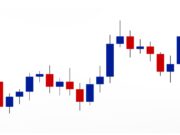Gold is having a moment – again. Up more than 30% so far in 2025 compared to the S&P 500’s 12% loss, the precious metal is making equity investors question their life choices. As gold trades around $3,424 per ounce and repeatedly tests new all-time highs, something bigger than typical market dynamics is clearly at play.
This Rally Has Staying Power
Unlike the panic-driven gold spikes we’ve seen during past market meltdowns, the current uptrend shows remarkable resilience. Since breaking through $2,000 in late 2023, gold has climbed steadily, ignoring many of its traditional market cues along the way.
Most notably, gold prices have continued rising even during periods of dollar strength – a relationship breakdown that would have been unthinkable just a few years ago.
“Gold used to be extremely predictable in how it responded to dollar movements,” notes veteran trader Maria Sanchez. “Not anymore. The playbook has changed completely.”
Central Banks Are Stockpiling Gold at Historic Rates
The smoking gun behind gold’s relentless climb? Central banks worldwide are buying at rates not seen in modern financial history.
For 15 straight years, central banks have been net buyers of gold, but in 2022, they went into overdrive. The World Gold Council reports they added a staggering 1,082 metric tons to their reserves that year alone – a historic record. That buying pace continued through 2023 and 2024, with over 1,000 metric tons added each year.
To put this in perspective: central banks are now buying gold at roughly double their pre-2022 rate.
China stands out among the buyers, having added to its gold reserves for 31 consecutive months through April 2025. Russia, Poland, Turkey, and India have also been significant players in this global gold grab.
A former central banking official speaking on condition of anonymity told me: “There’s been a fundamental shift in how we view reserve assets. The freezing of Russian assets was a watershed moment that forced everyone to reassess vulnerability.”
The Perfect Storm Driving Gold Higher
Multiple factors are converging to push gold toward the $4,000 milestone:
Geopolitical Instability Everywhere You Look
The conflicts in Ukraine and the Middle East have transformed the geopolitical landscape into unknown territory. The weaponization of financial systems – including the unprecedented freezing of Russian central bank assets – has made sovereign nations increasingly wary of over-reliance on foreign currency reserves.
Gold, with its physical presence and immunity to digital freezing, suddenly looks like prudent insurance rather than an antiquated asset class.
Inflation: Tamed But Not Defeated
Inflation has retreated from the alarming peaks of 2022, but remains stubbornly above historical norms. The unprecedented monetary expansion during and after COVID continues to ripple through global economies in ways economists are still trying to fully understand.
With the Federal Reserve pivoting toward a more accommodative stance in late 2024, the inflation outlook remains uncertain at best – a scenario that traditionally benefits gold.
America’s Debt Problem Keeps Growing
The U.S. national debt has surpassed $35 trillion with no ceiling in sight. Annual deficits continue expanding despite campaign promises to the contrary, raising legitimate questions about long-term dollar stability.
Many central banks view their increased gold reserves as insurance against potential dollar weakness – not necessarily imminent collapse, but gradual erosion of the current reserve currency system.
Trump’s Tariff Strategy Adds Market Anxiety
The revival of aggressive tariff policies under the Trump administration has injected another layer of uncertainty into global markets. These measures could potentially accelerate inflation while encouraging affected nations to accelerate de-dollarization efforts already underway.
The Expert Outlook: How High Can Gold Go?
Financial institutions and analysts have recently revised their gold forecasts upward:
UBS Sees More Room to Run
UBS recently raised its gold price target, projecting a price of $3,500 for 2025. “It feels counterintuitive to remain bullish after so many consecutive record highs,” acknowledges UBS strategist Joni Teves. “But the fundamental drivers simply haven’t changed.”
HSBC: Don’t Expect a Major Pullback
HSBC’s chief precious metals analyst James Steel admits gold appears overvalued by traditional metrics but sees minimal risk of significant decline. The bank cites geopolitical factors and tariff concerns as persistent supports for elevated prices.
“The market will likely stay elevated,” Steel writes, “and central banks will step in to buy any meaningful dips.”
Gabelli Gold Fund: American Investors Are Missing Out
Chris Mancini of Gabelli Gold Fund points to an intriguing anomaly: American retail investors have largely sat out the gold rally so far. He believes that significant ETF inflows would signal broader participation and could drive gold to $3,500-$3,800 by year-end.
Recent JPMorgan data showing record gold ETF inflows suggests this retail wave might finally be building.
What This Means for Your Portfolio
For individual investors wondering how to respond to gold’s historic run, consider these practical approaches:
Rethinking Your Allocation
Financial advisors traditionally recommend gold exposure of 5-10% in a diversified portfolio. Given current conditions, it’s worth reviewing whether your allocation aligns with your outlook on inflation, geopolitical risk, and dollar stability.
Investment Options Beyond Gold Bars
You don’t need a home safe or buried treasure to participate in gold’s momentum:
- Physical Gold: Coins and bars offer direct ownership but require secure storage solutions and typically involve premium costs above spot prices.
- Gold ETFs: Funds like SPDR Gold Trust (GLD) and iShares Gold Trust (IAU) provide hassle-free exposure with modest expense ratios (0.40% and 0.25% respectively). Both have gained over 11% in 2025.
- Mining Stocks: Gold producers offer potential leverage to rising prices, though they come with operational risks that physical gold doesn’t have. The VanEck Gold Miners ETF (GDX) offers diversified exposure to the sector and has gained approximately 18% year-to-date.
- Managed Funds: For those preferring professional management, funds like the Gabelli Gold Fund combine mining stock selection with potential dividend income.
The Road Ahead
As gold approaches the psychological $3,500 threshold, investors should maintain perspective. Every bull market experiences pullbacks, and gold is no exception. The metal’s price could easily retreat 5-10% from its highs without invalidating the broader uptrend.
However, the fundamental factors driving gold higher—unprecedented central bank buying, persistent geopolitical uncertainty, inflation concerns, and structural questions about dollar dominance—show no signs of abating.
Gold’s renewed prominence in global financial markets isn’t just a price story; it’s a systematic shift in how nations and investors view monetary security in an increasingly unpredictable world. Whether you’re a gold bug or just curious about the metal’s momentum, that shift deserves your attention.
Because sometimes the oldest store of value proves precisely why it’s lasted so long.





